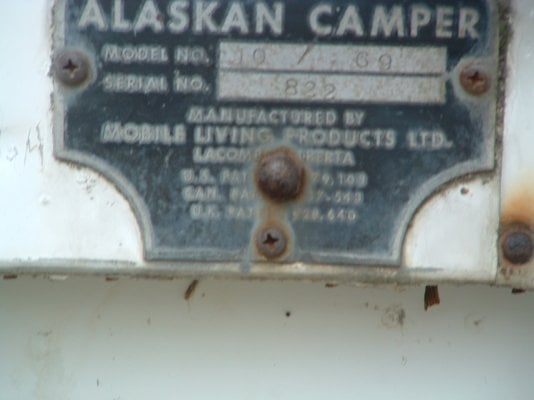Land-roamer
Advanced Member
Hi all,
It was suggested that I post this as a different topic, that others can contribute to from their perspective.
I read that at one time there may have been several manufacturing plants in the US/Canada churning out Alaskans. Obviously, all those plants have now gone away and the new Alaskans are all made in the same place, in Washington State. Was that re-consolidation caused by a decline in annual sales of Alaskans, possibly due to competition from cheaper or other types of truck campers. And did these "satellite" plants make the Alaskans from scratch, using design documents provided by the mother-ship company, or simply assemble them using parts shipped to them by the mother-ship? If the former, did the quality of craftsmanship vary greatly from plant to plant? That kind of historical perspective interests me for some reason...
Also, I wonder how Alaskan "purists" would compare the kind of craftsmanship of the older models (60's, 70's) with the new models rolling out the assembly line now (which I assume, possibly have a greater proportion of pre-formed components, plastics, etc...)?
Rusty wrote:
as to quality....the originals were well done, some plants did a better job than others but in the 80's the quality dropped a bit....vinyl covered paneling and fronts were substituted for real wood paneling of the 60's and 70's.
The campers built by Bryan and the crew in Washington are a far cry from all of that cost cutting and cutting corners thing. Well built, wood cabinets, full electronics, better hydraulics, Bells, Whistles, and now with the advent of computers I'd imagine something to call the dog in.....maybe not.
Full solar systems and external showers are on the upgrade list also
Kevin wrote:
I think they were built from blueprints and all built the same with the exception of some small items like the jack. I have a hydraulic pump with a separate reservoir instead of a jack and it looks like it is original.
The question about craftsmanship new verses old I would say the quality is the same, with the bonus for the new ones because they are lighter. I cannot really judge the new ones though having not owned one.
Any other insights and opinions out there, based on your experience?
It was suggested that I post this as a different topic, that others can contribute to from their perspective.
I read that at one time there may have been several manufacturing plants in the US/Canada churning out Alaskans. Obviously, all those plants have now gone away and the new Alaskans are all made in the same place, in Washington State. Was that re-consolidation caused by a decline in annual sales of Alaskans, possibly due to competition from cheaper or other types of truck campers. And did these "satellite" plants make the Alaskans from scratch, using design documents provided by the mother-ship company, or simply assemble them using parts shipped to them by the mother-ship? If the former, did the quality of craftsmanship vary greatly from plant to plant? That kind of historical perspective interests me for some reason...
Also, I wonder how Alaskan "purists" would compare the kind of craftsmanship of the older models (60's, 70's) with the new models rolling out the assembly line now (which I assume, possibly have a greater proportion of pre-formed components, plastics, etc...)?
Rusty wrote:
as to quality....the originals were well done, some plants did a better job than others but in the 80's the quality dropped a bit....vinyl covered paneling and fronts were substituted for real wood paneling of the 60's and 70's.
The campers built by Bryan and the crew in Washington are a far cry from all of that cost cutting and cutting corners thing. Well built, wood cabinets, full electronics, better hydraulics, Bells, Whistles, and now with the advent of computers I'd imagine something to call the dog in.....maybe not.
Full solar systems and external showers are on the upgrade list also
Kevin wrote:
I think they were built from blueprints and all built the same with the exception of some small items like the jack. I have a hydraulic pump with a separate reservoir instead of a jack and it looks like it is original.
The question about craftsmanship new verses old I would say the quality is the same, with the bonus for the new ones because they are lighter. I cannot really judge the new ones though having not owned one.
Any other insights and opinions out there, based on your experience?







